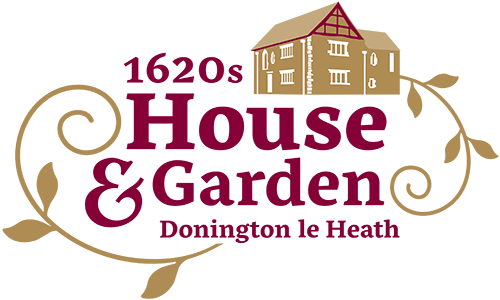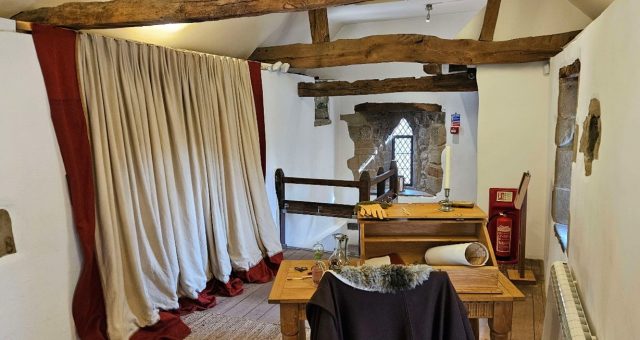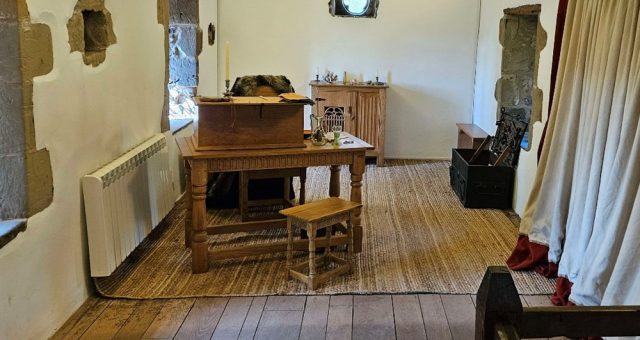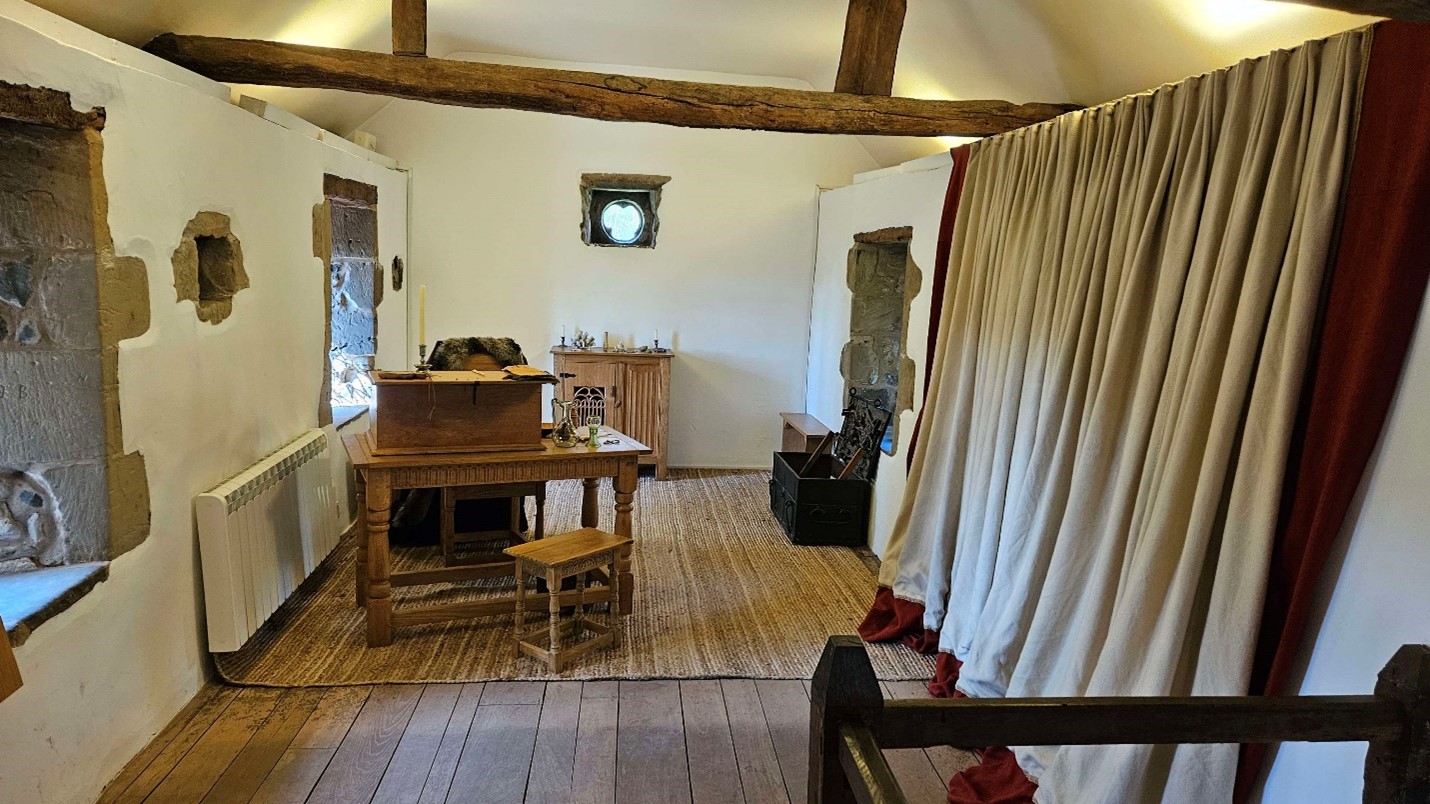The Study
This room would have originally been one of the most private spaces in the house, as it could have only been reached through one of the bedrooms (as the stairs from the dairy were not there at the time). This is Mr Digby’s study where he would manage his land and business interests, give instructions to his steward, deal with his correspondence and read the latest news and views in printed pamphlets and books. It was also where he kept money and important documents in a strongbox and other lockable cupboards.
The trefoil (Christian symbol of the Father, Son and Holy Ghost) windows may mean that this room was originally a chapel, which would not be unusual in a medieval house of this size. However, by the 1620s the Digbys were one of a few English families who still retained their Catholic faith despite the fact that the Catholic mass had been made illegal.
The secret function of this room as a private Catholic chapel was a great risk for the family and their servants, and especially for the travelling priests who led these secret masses, risking execution if they were discovered. The piece of furniture at the far end of the room is called an aumbrey, where a glint of a chalice may be seen. There are various holes in the walls which may have been secret hiding places.
Master Digby’s collection of curiosities sits on top of the aumbrey. This shows that he was an educated man, interested in the new ideas and places that were opening up with the exploration of the new world. Unusual and rare items like coral and fossils were prized as they crossed lines between animal, vegetable and mineral.
The light colour of the oak furniture in this room shows what all the wooden furniture in the house would have looked like when it was new, before the effects of many years of beeswax and age darkened the wood.
In previous periods the floor would have been strewn with rushes, but in the 17th century the floor was covered with plaited rush matting.
Turn to the left for




